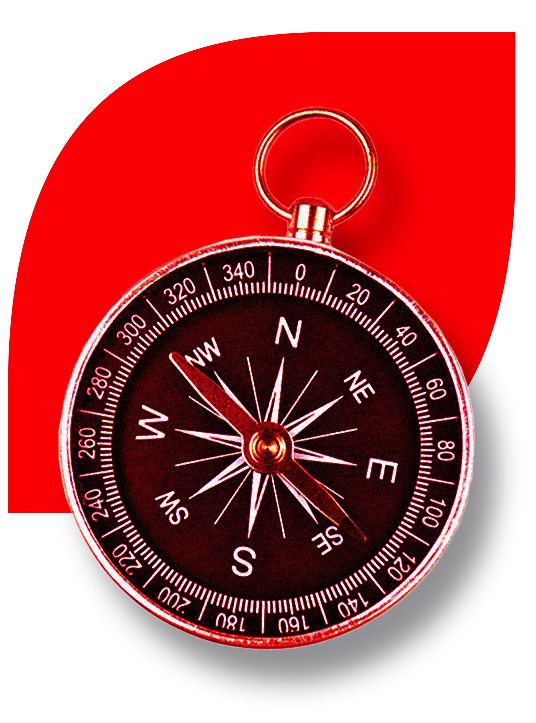
Provide direction with a vision and mission
The ingredients for organizational strategy
25.05.2023
The identity and long-term vision of a company: how do you summarize them? In the world of communication, the vision and mission come into play. Moreover, the vision and mission are the building blocks of the business strategy. Together, they influence how the organization is perceived from the outside. In this blog post, we will delve deeper into both the vision and mission. How do you create a good vision and mission, and why do we do it? Furthermore, we will explore how to ensure that both are both inspiring and guiding.
Importance
Both the vision and mission are intended to provide direction to the organization. You can think of them as a compass that each employee carries with them in their daily work. All business activities should, therefore, be related to the vision and mission. This way, employees can better understand what is happening around them and why certain decisions are being made. By following the compass as a team, individuals are connected and encouraged to behave positively. Behavior that aims to contribute daily to realizing the vision and mission.


Difference and similarity
At times, it may seem like we are talking about the same thing: vision, mission. There is indeed some overlap. So, what exactly is the difference? Perhaps the most significant difference is that a mission feels slightly more practical, concrete, or specific compared to the vision. A mission is the task you must accomplish to achieve the vision. The vision is long-term, grand, and ambitious. It may even be a dream or an ideal. Where the vision and mission intersect is in their wording. For both, the rule is: the shorter, the better. Be distinctive with concise and impactful language.
Vision
A vision is focused on the long-term. It goes beyond being just a goal. You can think of it as a picture of the future or even as a dream or vision of where you want the organization to be in the future. It describes the ideal situation that would be achieved by successfully fulfilling your mission. When formulating a vision, don't dwell on whether it's "good or bad." It's an ideal, an aspiration – an ambitious aspiration that inspires and guides all stakeholders of the organization. It is something that everyone believes in – a vision that describes what the organization and its target audience value. Keep in mind that a vision should meet the following criteria: future-oriented, concise, energizing, meaningful, and distinctive.
Aks questions
It's not easy. Trying to say too much in a few words. Daring to dream. Picturing an ideal world that may seem miles away. Nevertheless, we challenge you to do just that. Think about what your ideal world would look like. Think big. Also, put down on paper when you would consider yourself successful. Sometimes, putting it in quantifiable terms can help. For example, "100%..." or "no more...".
Regarding that ideal world, there are a few things not to forget to paint the most accurate picture of the future. Therefore, ask yourself the following questions and keep the answers in mind while crafting the vision:
- Do you foresee any changes in the industry? What opportunities and threats play a role there?
- Is the target audience evolving? Are their interests shifting? Does that impact the organization's added value?
- What are the organization's long-term goals? Are there macroeconomic developments that will have an effect?
Mission
What a mission is not? A promise that cannot be fulfilled. In a mission, you articulate the identity of the organization and what makes it distinctive. What can and does the organization genuinely offer to its stakeholders and target audiences? What can it deliver?
The identity and purpose of the organization are like tree roots: firmly grounded and (generally) not subject to change. Because identity is a fixed element in the mission, it is timeless. However, it should still be in line with the current context. All in all, keep in mind that the mission connects the present and the future. Just like with the vision, aim for being concise, distinctive, and describing your added value.
Ask questions
Now that you know what it is, let's start writing. Briefly. Powerfully. But what are we going to write? It is essential that the mission is formulated concretely. However, take your various business activities into account. If, at some point, you want to make changes to those activities, you don't want to have to adjust your mission. After all, you've described something that should, in principle, be timeless. So, while writing the mission, carefully consider if it is broad enough. To create a concrete, coherent, and concise mission, ask yourself the following questions:
- What you do want to achieve with the organization? Wat are your goals?
- For whom are you doing this? Who is the target audience?
- What is the organization's distinctive feature?
- What do you stand for as an organization? What is your belief?
- What problem do you solve? With what solution?

Curious about our strategic approach?
Then, please contact us.



